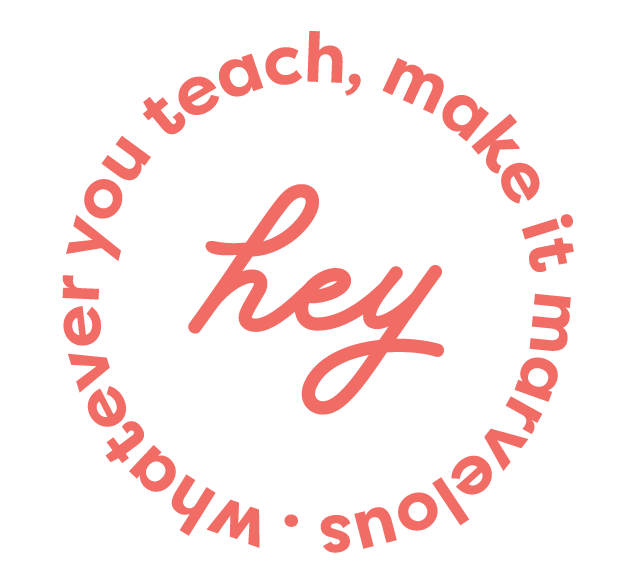How to Structure and Write a Compelling Blog Post
Learning how to structure and write a compelling blog post can feel like navigating through a dense forest, especially when you're wearing multiple hats as a coach, creator, or online teacher.
Initially, this skill may seem intimidating (especially if you’ve never thought of yourself as a writer), but we've crafted this concise guide to help you cut through the noise and complexities of how to structure and write a compelling blog post. It's designed to assist you in mastering the art of creating engaging blog posts that resonate with your audience and amplify your message effectively.
Keep reading, because becoming a proficient blogger is just a handful of insightful tips away
Identify Your Audience
The cornerstone of any successful blog post is a clear understanding of your target audience. This knowledge influences the tone, style, and content you'll use in your writing.
Determine Their Needs
Your online coaching program or course is designed to address specific pain points faced by your clients. Similarly, your blog posts should deliver helpful information that directly tackles these issues. Understanding their queries and what they're looking for can be achieved through methods like customer surveys or simply asking them questions via Instagram Stories.
Discover What Captures Their Interest
In addition to meeting immediate needs, it's vital to uncover topics that pique your readers’ interests. This insight will guide you when brainstorming ideas for future blog posts.
You can learn more about their interests from relevant forum discussions on sites like Reddit that are related specifically to the subject matter of your courses or programs. Alternatively, tools like Buzzsumo can help identify popular articles within similar niches.
Craft Content To Fit The Audience
Think about structuring your blog posts appropriately for your readership. How much technical language should be incorporated? Is the majority of your audience beginners or are they experts at your topic? Choose between long-form deep dives compared to short-and-sweet overviews depending on reader preference.
Brainstorm Ideas
The foundation of a compelling blog post lies in the brainstorming process.
Inspiration Sources
You probably already follow industry leaders and engage in discussions related to your field. These interactions can spark ideas for relevant content. Be sure to keep a notebook or use a tool like Evernote or Notion to keep track of your content ideas. (If you’re looking for a process for tracking your content topics, we recommend the Visible program, taught by Marvelous’ founders.)
Books, podcasts, webinars–all of these resources could also trigger topic suggestions.
Apart from this organic method of idea generation, there are tools like Google Trends or BuzzSumo that aid in keyword research and help identify trending subjects within your niche.
The aim here isn't merely chasing trends but finding evergreen content that will hold readers' attention long after being originally published.
Idea Validation
After coming up with an array of topic ideas comes the validation phase: ensuring demand exists for such content before investing significant time into writing it.
An effective way to validate an idea is by:
Conducting surveys among existing clients or followers, which allows you to directly tap into their preferences, needs, and opinions, providing essential first-hand validation for your idea.
Analyzing search engine data through SEO tools like SEMRush or Ahrefs - provides insights about how often certain keywords get searched, indicating interest levels around particular subjects.
Strategically confirming the viability of your idea can significantly enhance the efficiency of your content creation process and its overall impact.
Crafting Blog Post Titles
An integral part of brainstorming involves formulating captivating blog post titles. You should craft a title that not only captures the core points of the post but also builds curiosity, all while providing readers with a clear understanding of the content that awaits them.
Title creation begins with keyword research: Incorporate terms users likely search for when seeking information on your subject matter.
Create intrigue: Pose questions, make bold statements, and utilize numbers (e.g., "5 Ways To...").
Solve problems: If possible, emphasize 'how-to' aspects showing the immediate benefits readers gain from consuming this piece.
The Gist: A compelling blog post begins with brainstorming key topics relevant to your audience. Seek inspiration from customer interactions, resources, and tools like Google Trends or BuzzSumo. Validate ideas through surveys or SEO tool insights before crafting an enticing title that combines keywords, curiosity, and problem-solving.
Research Your Topic
In the world of content marketing, researching your topic is akin to laying a strong foundation for a building. It's an essential step in crafting blog posts that are not only engaging but also accurate and informative.
Finding Credible Sources
The internet is teeming with information–some reliable, others less so (we’re looking at you, ChatGPT). When you're on the hunt for data to support your main points or arguments, it's crucial to turn towards credible sources such as academic journals, respected books, and trusted websites.
Google Scholar, boasting an extensive database of scholarly literature across various fields, can be helpful here. For those moments when numbers speak louder than words, Statista comes in handy with its vast repository of statistics and market research reports.
Gathering Relevant Information
Once trustworthy sources have been identified, dive into gathering details related to your topic. This process isn't limited just to collecting facts directly linked to the subject at hand; understanding the broader context often enriches the discussion within any good blog post structure.
Note down interesting quotes or compelling pieces of evidence supporting (or contradicting) your perspective–this adds depth and credibility while keeping your readers' attention.
Keyword Research for SEO Optimization
A key component in writing a fantastic blog post involves keyword research, an integral part of search engine optimization (SEO). The right keywords enhance visibility on platforms like Google by aligning better with terms commonly used during searches about similar topics.
No matter how thorough your initial draft might seem, always proofread before hitting publish.
Structuring Your Blog Post
An outline is an essential part of the blog writing process. It acts as a guide, steering your thoughts and ensuring coherence throughout your piece.
The Significance of Good Blog Structure
A properly structured blog post enhances readability by presenting the main ideas in a logical sequence that's easy for readers to follow. Moreover, it improves SEO performance because content organized this way is easier for search engines to index.
Your outline should kick off with an engaging introduction that grabs the reader's attention and briefly outlines what they'll gain from reading further.
The body should be divided into sections or subheadings addressing different aspects of your topic while concluding with key takeaways or actionable steps based on everything discussed earlier.
Creating A Perfect Blog Post Outline
To start outlining, note down all major points you wish to cover in your blog post structure based on keyword research findings and target audience needs then arrange these logically so one idea naturally leads into another.
Begin with Title: Craft a compelling and catchy headline that not only captures readers' interest but also gives them insight into what information lies within.
Move onto Main Points: Under separate headings, list primary arguments related to the chosen topic.
Incorporate Evidence/Examples: Add supporting evidence like statistics or quotes if applicable under each point mentioned above.
Close off with Conclusion/Closing Thoughts: Summarize previously covered topics while highlighting why the provided info will prove helpful.
Tips For Effective Outlining
An effective outline isn't merely about listing topics–it involves creating connections between those topics too. Make sure there are clear transitions between various sections making up a good blog post structure.
The Gist: An effective blog post hinges on a well-crafted outline. It boosts readability, enhances SEO performance, and ensures a logical flow of ideas. Start with an engaging intro, divide the body into sections addressing your topic's aspects, and conclude with key takeaways or actionable steps. Remember to incorporate evidence where necessary and ensure smooth transitions between sections.
Creating the Body of Your Blog Post
The body of your blog post is where you provide valuable and engaging content to your readers.
This section should contain information that fulfills the promise made in your blog post title, compelling them to continue reading and to take action.
Penning Down Your Core Ideas
Your core ideas are essentially what make up the backbone of your content. These main points need to be clear, concise, and directly related to what was promised in the blog post title.
If a topic seems complex or overwhelming for readers at first glance, consider breaking it down into smaller subtopics or bullet points. This strategy makes navigating through dense material more manageable for readers while maintaining their interest throughout.
Incorporating Keyword Research Into Content Creation
Crafting an effective blog post involves not only writing captivating copy but also utilizing SEO techniques like keyword research. By naturally incorporating relevant keywords into the text, you can increase visibility on search engines, thus driving traffic to your site.
However, remember that overusing these terms can negatively impact readability; strive for a balance between creating an enjoyable, natural reading experience and optimizing for SEO by including target keywords.
For beginners, a great resource for understanding the basics of keyword research is Moz's Beginner Guide.
Engaging Readers with Compelling Content
The goal of any good article is to keep the reader engaged from start to finish, prompting interaction–whether it's leaving a comment, sharing on social media platforms, or signing up for your newsletter or an opt-in.
Create suspenseful narratives: Humans love stories, so weaving personal anecdotes, experiences, and insightful lessons into your posts will help captivate your audience until the end.
Add value at every turn: Ensure each sentence offers something beneficial to the reader - offering valuable insights, practical tips, sound advice, relatable experiences, and more will ensure that every part of the content enhances their perspective.
Use engaging calls to action: Encourage readers to take specific actions by incorporating well-paced calls to action. These prompts could invite them to share their thoughts, seek further information, or participate in discussions related to the article's content. This dynamic interaction fosters a deeper connection between the reader and the material.
The Gist: Writing a compelling blog post requires a balance of clear, concise ideas and the incorporation of strategic keywords. Break down complex topics into digestible subtopics or bullet points to maintain your reader’s interest. Remember, the key is to engage your audience with valuable content that prompts interaction while weaving in personal anecdotes and calls-to-action.
Add Visuals
Visual components are integral to a good blog post. They not only improve the visual appeal but also simplify your content for readers.
The Significance of Images and Videos in Your Blog Post
A well-selected image or video can clarify an idea more effectively than words alone.
According to statistics, over half of consumers desire more video content from brands they support, indicating how visual content greatly affects reader engagement levels.
Selecting Appropriate Visuals
Picking relevant visuals is crucial in enhancing your message's effectiveness. If you're discussing complex topics like keyword research or meta descriptions for SEO purposes, consider using infographics as these could help explain such subjects clearly.
Screenshots And Diagrams: Tools For Clarity
Screenshots and diagrams come in handy when creating a how-to post where step-by-step instructions need visual aids for clarity.
Studies suggest that people following directions accompanied by illustrations perform significantly better compared to those who rely solely on written guidelines.
Create Custom Graphics
If blogging has become part of your business strategy, investing time into designing custom graphics tailored specifically for each individual piece would be a wonderful value-add.
Custom-made graphics enhance brand recognition among audience members viewing multiple pieces over time.
However, remember: while adding suitable visuals is important, it should never overshadow providing valuable information within the written sections themselves. After all, it's the quality content shared that ultimately keeps audiences coming back again and again.
Proofread & Publish
The final stage in the creation of an impactful blog post involves proofreading and publishing.
A Thorough Proofread: The Key to a Good Blog Post
Prior to making any moves towards hitting 'publish', it's absolutely essential that you conduct a thorough proofreading of your work. This step encompasses checking for grammatical errors, typos, and punctuation mistakes while also maintaining consistency in tone throughout the piece.
In this age where tools abound at every corner, platforms like Hemingway Editor can be invaluable allies when creating engaging content. It goes beyond simple spell-checking; Hemingway highlights complex sentences or superfluous adverbs that could potentially hinder readability.
Your Content Online: More Than Just Publishing
Making sure your blog post gets seen on the internet isn't just about clicking "publish." There are several tips that can help you grow your readership:
Title Tag: Your title tag should not only captivate readers' attention but also incorporate results from keyword research pertinent to search engines' algorithms.
Meta Description: This brief summary appears beneath the title in search engine outcomes; hence, it must provide helpful information giving potential readers insight into what they'll find upon clicking through.
Social Media Sharing Options: An often overlooked aspect during publication, incorporating social media sharing buttons within each blog structure, makes disseminating enjoyable content easier for your audience.
Scheduled Posts: Consistency Is Key After You've Started Blogging Regularly
After establishing a routine of regular blogging, the importance of consistency cannot be understated.
By utilizing scheduled posts, you proactively maintain a steady content flow, showing your dedication to readers and reinforcing your blog's reliability and authority in your niche.
This approach ensures your audience knows when to expect new content, building loyalty and trust over time.
The Gist: Before hitting 'Publish', ensure your blog post is error-free, has a captivating title tag, an informative meta description and social media sharing options. Don't forget to schedule posts for consistency.
FAQs in Relation to How to Structure and Write a Compelling Blog Post
Q: How do you write a compelling blog post?
To write a compelling blog post, identify your audience, brainstorm relevant ideas, research the topic thoroughly, outline your thoughts clearly, create engaging content, and add visuals. Don't forget to proofread before publishing.
Q: What are the 7 steps to write an awesome blog post?
The seven steps are:
identifying your audience
brainstorming ideas
researching your topic
outlining your post
writing the body of the post
adding visuals for appeal and readability
proofreading and publishing
Q: How do you structure an effective blog?
An effective blog is structured with a clear introduction that hooks readers in, followed by well-researched and organized body paragraphs. It concludes with a strong ending that encourages reader interaction or action.
Q: What are the essential elements of a successful blog post?
A successful blog includes:
a catchy title
a hooking intro
well-structured body text with subheadings for easy reading
the use of visuals like images or videos for engagement purposes
credible sources cited properly
external/internal links
a conclusion/call-to-action (CTA)
SEO optimization
Final Thoughts
Creating captivating blog posts can be a great way to grow an audience and scale your online business.
Although blogging takes time to perfect, the investment is worth it!














